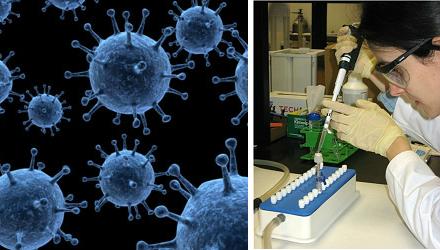Not Approved Under 40 CFR Part 136
 In addition to developing and approving methods for use in compliance monitoring, EPA may develop methods to support studies of specific industries (e.g., the Effluent Guidelines program) or for use in broad national surveys. If such studies or surveys lead to regulatory limits of new contaminants, EPA approves the applicable methods for nationwide or industry-specific use through rulemaking which includes an opportunity for public comment.
In addition to developing and approving methods for use in compliance monitoring, EPA may develop methods to support studies of specific industries (e.g., the Effluent Guidelines program) or for use in broad national surveys. If such studies or surveys lead to regulatory limits of new contaminants, EPA approves the applicable methods for nationwide or industry-specific use through rulemaking which includes an opportunity for public comment.Although the following methods are not in EPA regulations, they may be of interest to regulated entities, permitting authorities, and the public.The presence of a method here does not imply a regulatory requirement for its use.
Rapid Microbiological Methods for Ambient Water
We are making available methods that use a genetic quantitative polymerase chain reaction (qPCR) approach to detect enterococci in ambient water. The revised methods (1609.1 and 1611.1) include additional guidance and slight modifications.
Changes to Method 1609
- Section 9.11: Additional guidance is provided on the interpretation of ongoing calibrator sample CT values that coincides with modifications in the Method 1609.1/1611.1 calculation spreadsheet.
- Section 9.13: More information is provided on the interpretation of Internal Amplification Control (IAC) assay results.
- Section 11.1.8: A more standardized protocol is provided for preparing aliquots of cultured E. faecalis cells for use in subsequent preparation of calibrator and matrix spike samples.
- Section 11.2: Slight modifications have been made in the protocol for preparing E. faecalis genomic DNA standards based on the modifications in Section 11.1.8.
- Section 11.3: Modifications have been made in the protocol for preparing calibrator and matrix spike samples from aliquots of cultured E. faecalis cells to facilitate more standardized sample preparations. The new dilution protocol is based on the modifications in Section 11.1.8.
Changes to Method 1611
- General: The format and content of this method has been modified to mirror that of Method 1609.1. The only substantial differences between these two methods are now in the Taq polymerase reagents (Section 7.15), the recommended dilutions of water sample and corresponding calibrator sample DNA extracts for analysis (Section 11.9.4 and Table 10) and in the interpretation of IAC assay results (Section 9.13).
- Appendix E: This appendix has been added on how to request DNA standards at no charge from the EPA for a limited time. These DNA standards can be used for all four methods (1609, 1609.1, 1611 and 1611.1).
Changes to the Calculation Spreadsheet
The same spreadsheet can now be used for both Methods 1609.1 and 1611.1.
- The revised spreadsheet is now completely unlocked, which allows you to edit it. (Note: Use extreme caution in changing any of the existing calculation formulas.) In addition, the sequences column (Column C) in the standards worksheet is populated with the titles of the current lot number of DNA standards that are available from EPA (see Appendix E in Methods 1609, 1609.1 & 1611.1).
- Additional automatic calculations have been introduced to the spreadsheets for both methods to evaluate the quality of ongoing calibrator sample CT values and additional guidance has been provided for interpreting the variability (standard deviations) of initial calibrator sample CT values.
Calculation Spreadsheets for Methods
- Methods 1609.1 & 1611.1 Calculation Spreadsheet (Excel)(1 pg, 138 K, April 2015)
- Method 1609 Calculation Spreadsheet (Excel)(1 pg, 125 K, March 2013)
- Method 1611 Calculation Spreadsheet (Excel)(1 pg, 91 K, October 2012)
- Errata to Methods 1609.1 and 1611.1 (PDF)(1 pg, 155 K, June 18, 2015)
- 1609.1: Enterococci in Water by TaqMan® Quantitative Polymerase Chain Reaction (qPCR) with Internal Amplification Control (IAC) Assay (PDF)(71 pp, 670 K, April 2015, 820-R-15-099)
- 1611.1: Enterococci in Water by TaqMan® Quantitative Polymerase Chain Reaction (qPCR) (PDF)(72 pp, 684 K, April 2015, 820-R-15-008)
- 1609: Enterococci in Water by TaqMan® Quantitative Polymerase Chain Reaction (qPCR) with Internal Amplification Control (IAC) Assay (PDF)(72 pp, 1 MB, March 2013, 820-R-13-005)
- 1611: Enterococci in Water by TaqMan® Quantitative Polymerase Chain Reaction (qPCR) Assay (PDF)(56 pp, 415 K, October 2012, 821-R-12-008)
- 1693: Cryptosporidium and Giardia in Disinfected Wastewater by Concentration/IMS/IFA (PDF)(75 pp, 1 MB, September 2014, 821-R-14-013)
- Method B: Bacteroidales in Water by TaqMan® Quantitative Polymerase Chain Reaction (qPCR) Assay (PDF)(111 pp, 9 MB, June 2010, 822-R-10-003)
- Acceptability of the EPA qPCR Test at Your Beach (PDF)(4 pp, 36 K, December 2013, 820-R-13-012)
- Detection and Quantification Limits of EPA Enterococcus qPCR Methods (PDF)(7 pp, 62 K, December 2013, 820-R-13-013)
-
1605: Aeromonas in Finished Water by Membrane Filtration using Ampicillin-Dextrin Agar with Vancomycin (ADA-V) (PDF)(36 pp, 147 K,
October 2001,
821-R-01-034)
Procedure for the detection and enumeration of Aeromonas species in finished water samples
-
1602: Male-specific (F+) and Somatic Coliphage in Water by Single Agar Layer (SAL) Procedure (PDF)(38 pp, 278 K,
April 2001,
821-R-01-029)
Procedure to detect and enumerate male-specific (F+) and somatic coliphages in ground water and other waters
-
1601: Male-specific (F+) and Somatic Coliphage in Water by Two-step Enrichment Procedure (PDF)(40 pp, 341 K,
April 2001,
821-R-01-030)
Procedure to determine the presence or absence of male-specific (F+) and somatic coliphages in ground water and other waters
